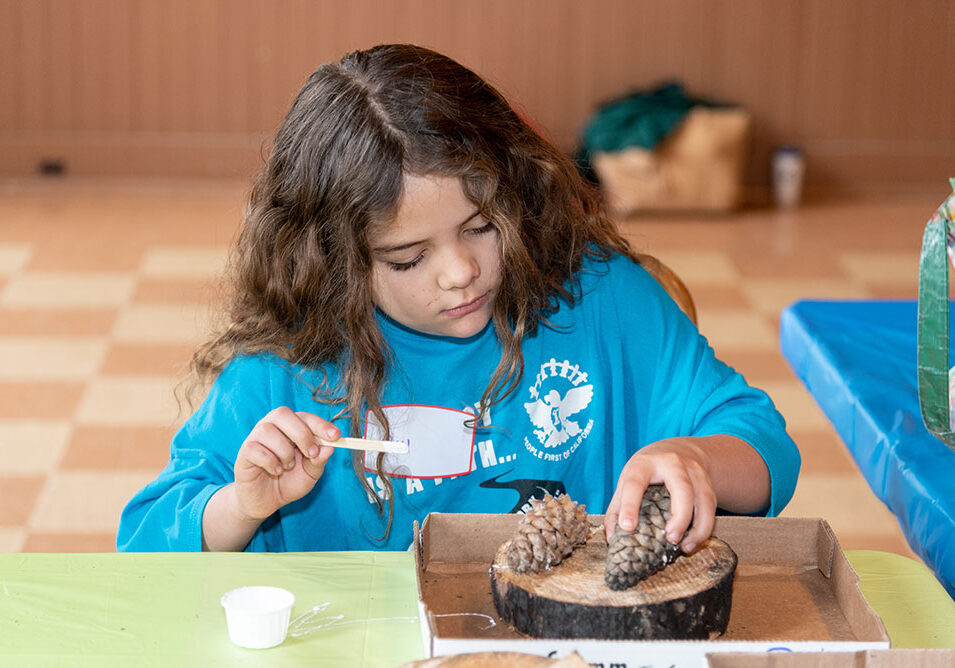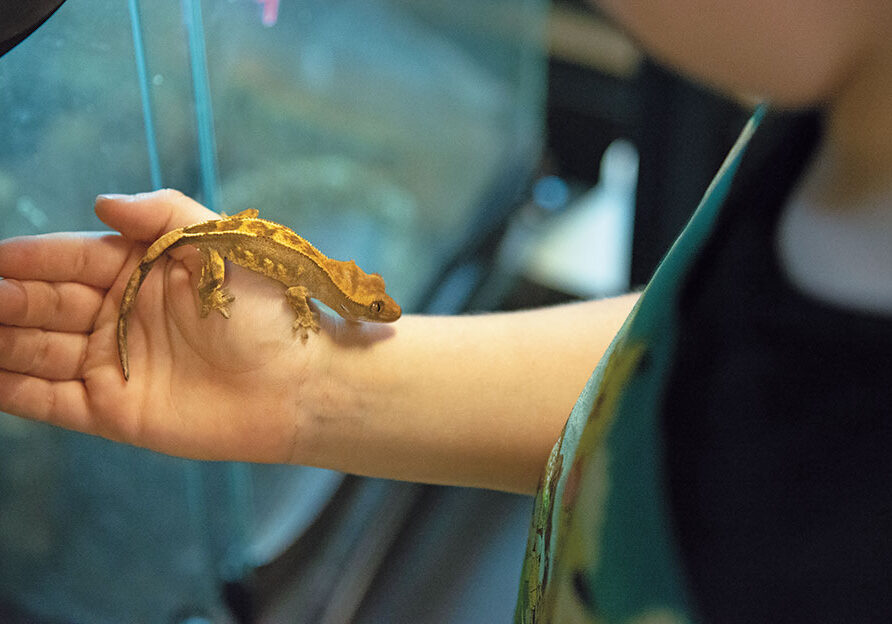 When Erica Galligan’s children were young, her family tried adopting a dog. But allergy issues forced them to return their pet to the breeder. Over time they found other alternatives, starting with a saltwater aquarium for the family and gradually adding freshwater fish and a tree frog for their sons. “I figured an aquarium was easy, low-maintenance, and fun to look at,” Galligan explains.
When Erica Galligan’s children were young, her family tried adopting a dog. But allergy issues forced them to return their pet to the breeder. Over time they found other alternatives, starting with a saltwater aquarium for the family and gradually adding freshwater fish and a tree frog for their sons. “I figured an aquarium was easy, low-maintenance, and fun to look at,” Galligan explains.
According to the American Veterinary Medical Association, 56% of U.S. households include a pet. So if you’re considering a pet for your child’s holiday gift, how can you select the right one? Here are five factors to consider and a few tips for easing into ownership.
Amount of care and energy
Different pets require varying levels of commitment. Consider what time you have available each day to care for a pet. Are you willing to walk a dog? Do you want to be regularly cleaning a hamster cage? Can you give younger pets the extra attention they require?
Sarah Collins, an adoption team leader for the Wisconsin Humane Society, advises, “Be honest about what you can handle. And remember that responsibilities will ultimately fall on the parents.”
Aquarium pets, such as fish and dwarf frogs, require the least care. Next come tank- and cage-kept pets: snails, birds, reptiles, rodents. And then cats.
Aside from horses, dogs can be the most time-consuming pets, with some breeds needing frequent exercise. Recognizing a dog’s energy level before bringing it home can prevent any surprises related to care and exercise.
Puppies particularly require attention, even if they have been housebroken. “The rule of thumb is to allow one hour for their age in months, plus one,” Collins says, explaining how long a puppy can wait before being let out. For example, a two-month-old puppy would have to be walked every three hours, day and night.
Knowing how much time you can invest in a pet may help narrow your options.
Ages of kids and level of responsibility
Introducing a new pet into a home with very young children can be a challenge—for both the pet and the child. Toddlers don’t have the capacity to understand the appropriate handling of animals and their quick motions can startle or scare pets. If you’re considering a pet while your children are young, consult pet store or humane society staff to find an animal whose personality melds well with active youngsters.
With older children, taking responsibility becomes more of an issue. Often kids want a pet without understanding the care involved. Discuss how much work they’re willing to assume and explain what will be necessary.
Bridget Cahill drafted a contract with her daughters before allowing them to purchase a tortoise. Then each girl signed the contract, agreeing to the responsibilities and consequences they’d outlined together.
“It did say on the contract, ‘I will not throw a fit when you ask me to feed Nelly. I will do it lovingly and happily,'” she says.
Your Lifestyle
It’s easy to think a dog or cat would be fun to own—until you’re planning a trip and need to find a place to board your pet while you’re gone. If you travel often, this quickly becomes a hassle.
“It’s pretty easy to put a 10-day feeder in an aquarium,” notes Galligan, which makes fish a terrific option for families who are away from home frequently.
For a busy family on the go, cats, rabbits, guinea pigs, or other independent pets work well.
Space
It’s not necessary to have a fenced back yard or any yard at all to own a dog. But you should have in mind places to walk the dog and play with it. A small aquarium fits a bedroom, like the freshwater fish tank one of Galligan’s sons keeps in his room. A litterbox can be kept in a laundry room or basement with cat access.
Collins says, “If you have a small house or yard, you just have to be able to accommodate your pet’s needs.”
If you live in an apartment or condo, don’t forget to check the rules applying to pet ownership before bringing home any animal.
Allergies
People can be allergic to dogs, cats, birds, and even guinea pigs. Reactions such as itchy eyes, runny noses, and rashes come from a protein in pet dander and saliva and occur in 15 to 30 percent of allergy suffers, according to The Asthma and Allergy Foundation of America. Because allergens stick to surfaces such as clothing and walls, it’s important for those with pet allergies to avoid having the animals in their homes, if possible.
But this doesn’t mean families with allergies can’t have a pet. Reptiles and amphibians don’t create the allergy-causing protein and should be safe. Or choose a pet requiring more regular grooming, such as a poodle or poodle-mix dog. Also note that the smaller the pet, the less dander is created to activate allergies. Ask your allergist or a veterinarian for recommended pet breeds.
Collins advises, “If you’re not sure, get allergy tested by your doctor.”
Whatever animal you choose this holiday, you will find many benefits and rewards from being pet owners. “It’s a lot of fun,” says Galligan. “It’s great for kids to grow up with the responsibility for someone other than themselves.” With so many breeds and varieties out there, you’re sure to find a pet to fit your family during the holidays or any time of the year.
Posted in: Community
Comment Policy: All viewpoints are welcome, but comments should remain relevant. Personal attacks, profanity, and aggressive behavior are not allowed. No spam, advertising, or promoting of products/services. Please, only use your real name and limit the amount of links submitted in your comment.
You Might Also Like...
Holiday Meals: Shaping Healthful Year-Round Eating Habits
Although most of us look forward to the holidays, no one looks forward to the consequences of overindulging in the unhealthy food options that have become commonplace at festive mealtimes. […]

ART from Ashes Youth Workshops
During the wildfire season of 2007, over 9,000 separate wildfires burned approximately 1.5 million acres in California. Out of this devastation the nonprofit ART from the Ashes (artfromtheashes.org) was created. […]
Krysta Shaw-Stearns & The Red Bluff Performing Arts Centre: A Center for Expression, For Everyone
Everyone deserves a creative outlet and a form of expression that brings people together. Whether dancing and performing are passions or just hobbies, the Red Bluff Performing Arts Centre is […]

Make Great Gifts Any Time of Year
Bath Salt Bonanza When the time for teacher gifts rolled around again, my daughter and I decided to try our hands at bath salts. And I’m so glad we […]



